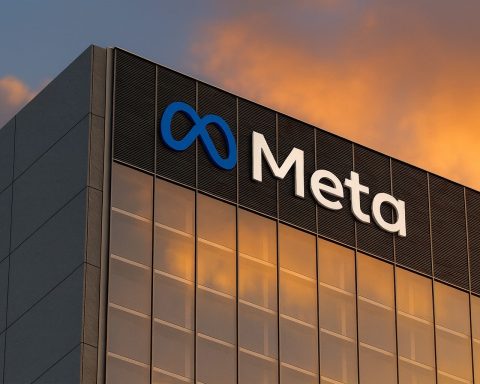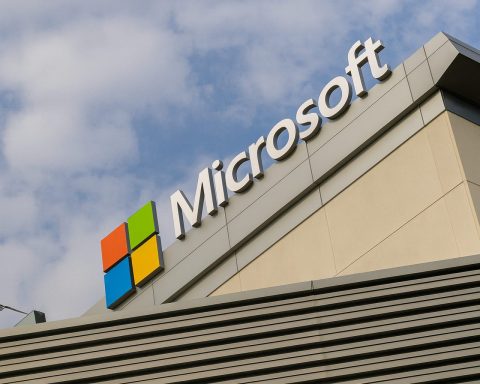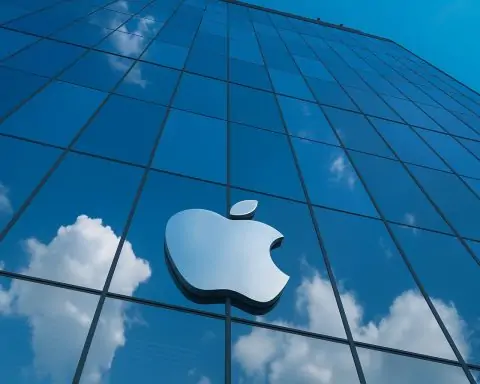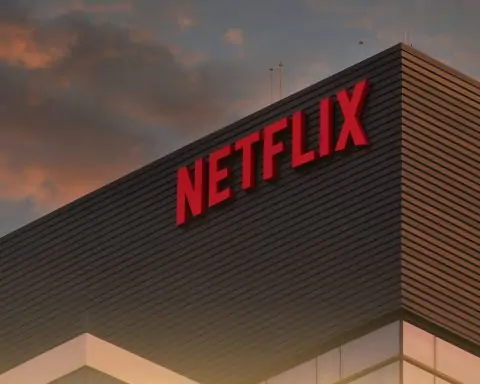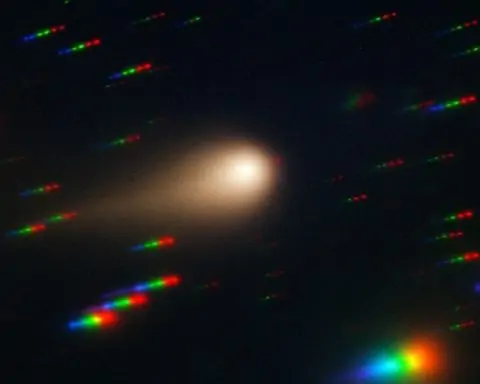- On Aug 7, SpaceX launched 24 Amazon Kuiper satellites on a Falcon 9 from Cape Canaveral at 10:01 a.m. EDT, increasing the operational Kuiper fleet from 78 to 102 and with the first-stage booster landing on the drone ship A Shortfall of Gravitas.
- Rocket Lab’s Aug 5 Electron launch deployed the QPS-SAR-12 “Kushinada-I” SAR satellite into a 575 km orbit from Launch Complex 1, marking Rocket Lab’s 69th Electron flight and the fifth dedicated iQPS mission.
- China’s Long March 12 from Wenchang on Aug 4 launched 18 low-orbit internet satellites for GalaxySpace, the seventh batch in eight days, bringing GalaxySpace to 34 satellites launched.
- NASA’s Crew-11 arrived at the ISS on Aug 2 and Crew-10 undocked on Aug 7 after six months in orbit, with a Pacific splashdown planned for Aug 8—the first U.S. crew splashdown in the ISS era.
- SpaceX’s Starship Ship 37 completed a static-fire test on Aug 1–2 and is targeting Starship Flight 10 for a later August attempt, with a full-duration engine burn demonstrated.
- ULA’s Vulcan Centaur is scheduled for its debut national-security mission on Aug 12, followed by launching Amazon’s next Kuiper batch on Vulcan’s first commercial flight.
- Arianespace is preparing the third Ariane 6 test launch (NET Aug 12) as Europe seeks to restore an independent launch capability.
- Firefly Aerospace went public on Aug 6, raising $868 million in a priced IPO at $45 per share, valuing the company at about $6.3 billion, with a $1.1 billion backlog as of Q1 2025.
- NASA and DOE accelerated plans for fission power systems for Moon and Mars, while reports say China and Russia are planning a lunar reactor by the 2030s.
- NASA approved relocating a retired Space Shuttle orbiter to Houston on Aug 6 under the One Big Beautiful Bill Act, with congressional intent that the orbiter be Discovery and $85 million earmarked for transfer.
A whirlwind two days in spaceflight saw a flurry of rocket launches, game-changing announcements from space agencies, big moves by private companies, and even a surprise shuffle of a retired Space Shuttle. From internet satellites and ISS crew swaps to defense-driven projects and billion-dollar investments, here are the top satellite and space developments from August 6–7, 2025.
Satellite Launches and New Missions
- SpaceX Launches Amazon’s Kuiper Satellites: SpaceX kicked off August 7 with a Falcon 9 launch carrying 24 of Amazon’s Project Kuiper broadband satellites into low Earth orbit [1]. Liftoff from Cape Canaveral at 10:01 a.m. EDT was the second Falcon 9 mission Amazon booked to deploy its planned 3,200-satellite constellation. The KF-02 mission brings Amazon’s total Kuiper satellites on orbit from 78 to 102 operational spacecraft [2], as the company races to build out its Starlink-rivaling network. The Falcon 9’s first stage – a brand-new booster earmarked for future Falcon Heavy use – successfully landed on the droneship A Shortfall of Gravitas downrange [3] [4], underscoring SpaceX’s routine reuse milestones.
- Rocket Lab Expands a Radar Constellation: On August 5 (NZ time), Rocket Lab conducted its 11th Electron launch of 2025, deploying a synthetic-aperture radar satellite for Japan’s iQPS constellation [5]. The mission, cheekily named “The Harvest Goddess Thrives,” lofted the QPS-SAR-12 “Kushinada-I” satellite to a 575 km orbit from Launch Complex 1 in New Zealand [6]. This was Rocket Lab’s 69th Electron flight overall and the fifth dedicated launch for iQPS under a multi-launch deal. “Today’s fifth and flawless deployment for iQPS once again underscores Electron’s reliability” in delivering tailored access to orbit, Rocket Lab CEO Peter Beck said after the successful launch [7]. With four more iQPS missions slated through 2026, Rocket Lab is cementing its role in building out that commercial SAR constellation.
- China’s Rapid-Fire Constellation Launches: China carried out a “launch blitz” of its own, expanding a state-backed broadband megaconstellation. On Aug. 4, a Long March 12 rocket from the Wenchang spaceport lofted 18 low-orbit internet satellites – the seventh batch in China’s nascent network – marking the third such launch in just eight days [8] [9]. Notably, this mission was the first to use satellites built by a private Chinese company (Beijing-based GalaxySpace) for a government constellation [10]. Previously, only state-owned manufacturers contributed satellites, so this signals a deeper public-private integration in China’s space plans. GalaxySpace, now with 34 sats launched to date, is emerging as a leader in China’s commercial space sector. “Next, GalaxySpace will make all-out efforts to develop core technologies … and contribute to [our] independent and reliable space infrastructure,” said Hu Zhao, a senior GalaxySpace designer [11]. The Long March 12, on only its second flight, delivered the payload to orbit and brought China’s launch count to 43 missions this year [12] – underscoring the country’s high launch cadence as it builds a domestic answer to SpaceX’s Starlink.
- Other Launch Highlights: While the week’s headliners were in broadband satellite deployment, other missions pressed ahead. NASA and SpaceX’s Crew-11 astronaut mission reached the ISS on Aug. 1, and attention turned to Crew-10’s homecoming. After over 140 days in orbit, the Crew-10 Dragon capsule Endurance (with NASA’s Anne McClain commanding) undocked from the ISS on Thursday, Aug. 7 at 16:05 UTC [13]. The four Crew-10 astronauts from the U.S., Japan, and Russia departed the station, handing over operations to the newly arrived Crew-11 crew. Splashdown was targeted for the next day off the California coast – notably the first U.S. crew splashdown in the Pacific in the ISS program’s history [14] (previous Crew Dragon returns were in the Atlantic/Gulf). SpaceX recovery teams off San Diego stood by as Crew-10 wrapped up a six-month mission that saw international collaboration continue seamlessly on station.
- Starship Preps and Upcoming Launches: SpaceX also made progress toward the next Starship test flight at Starbase, Texas. In late July and early August, Ship 37 underwent static fire tests as the company confirmed a full-duration engine burn on Aug. 1–2 [15] [16]. With the Starship Flight 10 test profile expected to mirror previous attempts, SpaceX is reportedly targeting later in August for this highly anticipated launch pending regulatory approval. The Starship program’s advances come as United Launch Alliance (ULA) readies its Vulcan Centaur rocket for a debut national security mission on Aug. 12, followed by launching Amazon’s next Kuiper batch on Vulcan’s first commercial flight [17]. And in Europe, Arianespace is preparing the third Ariane 6 test launch (NET Aug. 12) as it works to restore an independent launch capability [18]. In short, the launch sector remains at full throttle globally.
Human Spaceflight Updates: ISS, Starliner and Beyond
- ISS Crew Rotation & Extended Partnerships: The International Space Station saw a major crew rotation in this period. Crew-11 arrived at the ISS on Aug. 2, and Crew-10 departed on Aug. 7 as noted above, continuing the regular cadence of Commercial Crew flights. This mission also reflected ongoing international partnerships – for example, Japan’s Kimiya Yui on Crew-11 ensured a Japanese astronaut will continuously occupy the ISS for about a year (through Crew-12’s arrival) [19]. Meanwhile, amid geopolitical tensions, Roscosmos confirmed it has agreed with NASA to extend ISS operations to 2028 [20]. This commitment by Russia to stay on station through 2028 aligns with the United States, Europe, Japan and Canada’s plans, even as all partners consider what comes after ISS.
- NASA Rethinks Post-ISS Plans: Planning for the post-2030 era, NASA is revising its approach to commercial space stations. According to agency officials, NASA is “changing course” in how it will support development of private Low Earth Orbit (LEO) stations, even if that means a potential gap in a U.S. human outpost in orbit [21]. In other words, NASA acknowledged it might not maintain an uninterrupted American presence in LEO between the ISS’s retirement and new commercial stations becoming operational. This sober assessment accompanies a broader strategic shift: renewed focus on human missions to Mars. The White House’s proposed FY2026 budget strongly emphasizes Mars exploration prep work. “We will pursue our manifest destiny into the stars, launching American astronauts to plant the Stars and Stripes on the planet Mars,” President Donald Trump proclaimed in his inaugural address [22] – a goal now reflected in funding priorities. NASA’s budget proposal boosts technology development for Mars transports and surface systems, even as the agency juggles Artemis lunar program needs. The trade-off, however, is fewer resources for extending the ISS or quickly bridging to commercial LEO destinations, hence the possibility of an orbital gap. Agency leaders stressed that keeping a continuous human presence in space remains a priority, but not at the expense of the longer-term Mars vision [23].
- Starliner’s Uncertain Path Forward: Boeing’s CST-100 Starliner program hit another snag, raising questions about crew safety. In an Aug. 7 briefing, NASA officials revealed they may bring home Starliner’s two test astronauts aboard a SpaceX Crew Dragon instead of Starliner, if ongoing thruster problems aren’t resolved soon [24] [25]. (Veteran astronauts Butch Wilmore and Suni Williams have been living on the ISS since Starliner’s first crewed test launch in June.) Starliner suffered 5 failed reaction control thrusters during docking on June 6, and engineers are still troubleshooting causes ranging from overheating to insulation shedding [26] [27]. “We’re in a kind of a new situation here… We don’t just have to bring a crew back on Starliner, for example. We could bring them back on another vehicle,” noted Ken Bowersox, NASA’s head of space operations [28]. NASA has delayed the next SpaceX Crew-9 launch to late September in case it needs to send up an empty Dragon to retrieve Wilmore and Williams. A final decision on Starliner’s return mode is expected by late August [29]. Boeing, for its part, has indicated the Starliner capsule can stay attached to ISS into early 2026 if needed, and it is working on thruster fixes. This cautious approach shows NASA’s commitment to crew safety as Starliner fights through its test phase – but it’s also an implicit nod to SpaceX’s Crew Dragon as a proven lifeline. The uncertainty adds another wrinkle as NASA balances commercial crew partners and keeps the ISS staffed.
Space Agency News and Policy Moves
- Shuttle Orbiter Heads to Houston: In a twist that blends politics and nostalgia, NASA has decided to relocate one of its retired Space Shuttle orbiters to Houston – though exactly which orbiter remains under wraps [30]. Acting Administrator Sean Duffy approved the move on Aug. 6 to comply with a congressional mandate in the recently passed “One Big Beautiful Bill” Act [31]. Texas lawmakers, led by Sen. Ted Cruz and Sen. John Cornyn, had long argued Houston’s Space Center should “bring home” a flown Shuttle, after the city was snubbed in the 2011 orbiter museum allocations. Cornyn hailed Duffy’s approval of transferring a “retired NASA space shuttle to a non-profit near Johnson Space Center” and made clear the “congressional intent” that it should be Orbiter Discovery [32] [33]. Discovery currently resides at the Smithsonian’s Udvar-Hazy Center in Virginia – and the Smithsonian notably responded that it owns Discovery and had not been contacted about any move [34] [35]. Nonetheless, Space Center Houston is proceeding “on the basis that the shuttle identified is Discovery,” its CEO said [36]. The relocation, if it goes forward, faces major logistical hurdles: the two Shuttle Carrier 747 aircraft were retired years ago, meaning NASA might have to devise another way to transport the Shuttle orbiter from D.C. to Texas [37]. Congress earmarked $85 million for the transfer (including $5 million just for transportation) [38]. The legal and public relations battle may heat up in coming months, but for now Houston is celebrating the prospect of finally getting a real Shuttle – a symbolic win for the “Space City” and a postscript to the shuttle-era saga.
- International Alliances and Rivalries: Beyond the U.S., space policy news echoed the competitive and cooperative dynamics of a new space race. NASA and the U.S. Department of Energy accelerated efforts to develop nuclear reactors for the Moon and Mars, after reports that China and Russia are jointly planning a lunar reactor by the 2030s [39]. NASA aims to demonstrate a fission surface power system on the Moon later this decade, which officials say is crucial for sustained lunar bases and future Mars missions. At the same time, Europe is bolstering its space resilience and autonomy – for example, the UK Space Agency just granted its first orbital launch license to a Scottish rocket startup on Aug. 5, clearing the way for launches from UK soil [40]. And in Russia, space remained in the geopolitical spotlight: on Aug. 6, Russian authorities arrested a scientist on charges of leaking military satellite data to the West [41], a stark reminder that surveillance and intel satellites are viewed as strategic assets. Overall, the 2025 climate in space policy is one of both cooperation (ISS, Artemis Accords partners, etc.) and rising competition/nationalism, as major powers jockey for technological edge and prestige in space.
Commercial Space: Industry Moves and Tech Updates
- Firefly Aerospace’s Blockbuster IPO: The commercial space sector saw a financial milestone as Texas-based Firefly Aerospace went public. On Aug. 6, Firefly raised $868 million in an upsized U.S. IPO, pricing 19.3 million shares at $45 each (above the initial range) [42]. This hefty offering values the launch and spacecraft company at about $6.3 billion post-IPO [43]. Backed by Northrop Grumman and other investors, Firefly has attracted attention for its rapid progress – it successfully landed its Blue Ghost lunar lander on the Moon in March on the first try [44], and is developing medium-lift Alpha rockets and orbital transfer vehicles. The company reports a $1.1 billion order backlog (over 30 missions) for launches, lunar landers, and space services as of Q1 2025 [45]. Firefly’s stock is set to trade on the Nasdaq (ticker: FLY) starting Aug. 7 [46]. Industry analysts say this IPO – one of a string of successful space firm listings in 2025 – indicates rising investor confidence. “Given Firefly and the success of [recent space IPOs], I think you’ll see several more space companies test the waters” of public markets soon, commented one venture law expert [47] [48]. The influx of capital will help Firefly scale up production of its Alpha rockets and ambitious medium-class “Beta” launcher in development, as well as compete for government and commercial lunar contracts in NASA’s Artemis supply chain.
- Virgin Galactic Delays and Space Tourism: Space tourism pioneer Virgin Galactic announced it is slipping the schedule for its next commercial spaceplane flights [49]. The company had begun flying paying customers to suborbital space earlier in 2025, but on Aug. 6 it confirmed that the start of its higher-cadence “Galactic 02” flights will be pushed to later this year. Virgin cited vehicle enhancement work on its existing VSS Unity spaceplane and the preparation of its next-generation Delta-class spaceplanes. While demand remains high (with hundreds of ticket holders awaiting trips), Virgin Galactic is under pressure to increase its flight rate and revenue after years of delays. Industry watchers noted that any further slippage could cause customers to lose patience, especially as competitors like Blue Origin are expected to resume New Shepard tourist flights soon. Virgin says it is taking the necessary time to ensure safety and a smooth experience as it scales up operations. The commercial human spaceflight market, still in its infancy, will be closely following Virgin’s timeline for delivering regular trips to the edge of space.
- Orbital Tugs & Tech Upgrades:Impulse Space, a California startup founded by a former SpaceX propulsion chief, revealed plans to fly an upgraded “Mira” orbital transfer vehicle later this year [50]. The Mira space tug’s new version will have greater propulsion performance and the ability to operate out to geostationary orbit (GEO). This enhancement broadens Mira’s utility for satellite servicing, relocation, and debris removal missions in high orbits – roles increasingly in demand as GEO satellites proliferate and age. Impulse Space is already slated to support a private Mars mission in collaboration with Relativity Space in the coming years, and its beefed-up orbital stage could also compete in U.S. Space Force missions for on-orbit servicing. The company’s August 6 announcement underscores the growing investment in space mobility and logistics vehicles as a complement to launch services. Similarly, Sierra Space reported progress on its Dream Chaser spaceplane (an uncrewed cargo test article is in final integration ahead of a first ISS resupply flight in late 2025), and Redwire successfully tested new in-space manufacturing tech on the ISS this week – small developments that point toward a more versatile space ecosystem.
- SpaceX Starship and Starlink Updates: SpaceX’s Starship program, as noted, is gearing up for a critical 10th flight test, hoping to finally achieve a full orbital attempt. Elon Musk’s team performed a series of engine tests at Starbase and installed an enhanced flight termination system after lessons from previous explosions [51]. Musk hinted on social media that if August’s test goes well, operational Starship launches (carrying Starlink satellites and eventually lunar hardware for NASA) could begin in 2026. On the Starlink front, SpaceX’s internet mega-constellation surpassed 5,000 satellites in orbit in early August, and the company rolled out a new ruggedized “Starlink Mobility” service targeting maritime and on-the-move customers. Amazon’s Kuiper constellation, which gained 24 satellites this week via SpaceX as detailed above, still has a long way to go (over 3,000 satellites yet to launch) but is planning a rapid launch cadence using ULA’s Vulcan, Blue Origin’s New Glenn, and more Falcon 9s starting later this year [52] [53]. The rivalry between Starlink and Kuiper is heating up, promising expanded global broadband coverage – and raising continued concerns about orbital congestion and debris management, which regulators are watching closely.
Military Space and Defense Developments
- Pentagon’s “Golden Dome” Missile Defense: A major theme in U.S. military space is the push for a next-gen missile defense network, nicknamed “Golden Dome for America.” Although officially unacknowledged by name, this initiative loomed large at the Space & Missile Defense Symposium in Huntsville, AL, this week [54]. The program, championed by the Trump administration, envisions a layered shield against enemy missiles using constellations of sensor and interceptor satellites in orbit. Defense officials were instructed to avoid saying “Golden Dome” publicly at the conference [55], highlighting the sensitivity and early stage of the effort. Nonetheless, industry is mobilizing: prime contractors like Northrop Grumman and Lockheed Martin have poured R&D funds into applicable technologies (e.g. kill vehicles, tracking satellites) in anticipation of lucrative contracts [56]. Even commercial space operators spy an opportunity – Canada’s Telesat said the government could leverage its planned Lightspeed LEO constellation for missile-tracking and secure comms. “Lightspeed could make valuable contributions to Golden Dome,” Telesat’s CEO Dan Goldberg offered on an earnings call [57], effectively pitching his broadband network as part of the U.S. defense architecture. While Golden Dome is still conceptual, Congress has authorized initial funding, and the Space Force is quietly running technology demos. This project signals the growing blur between military and commercial space systems, as nations look to protect satellites and homelands from emerging threats.
- U.S. Army Builds Space Savvy: The U.S. Army, traditionally focused on terrestrial wars, is upping its space game. On Aug. 6, Army leaders announced a new “40 Delta” military occupational specialty (MOS) dedicated to space operations [58]. This means for the first time, soldiers can enlist specifically to become space domain experts – handling satellites, GPS and communications networks, missile warning, and other space-enabled capabilities for battlefield support. Establishing the 40D MOS (informally dubbed “Army astronauts” by some insiders) is part of the Army’s recognition that modern warfare relies heavily on satellites for intelligence, navigation, and targeting. “The service is launching ‘40 Delta’… to build expertise in space domain operations,” noted Army officials [59]. These space operators will work closely with the U.S. Space Force and Army Space and Missile Defense Command to integrate space assets with ground forces. Alongside this, the Army and Space Force are collaborating on new units and training programs to ensure soldiers in the field aren’t cut off if satellites are jammed or knocked out. In a related development, DARPA kicked off a new project on Aug. 7 to develop tactical satellites deployable on short notice, further blurring the lines between traditional military branches and the space domain. All of these steps reflect the Pentagon’s understanding that dominance on the high ground of space is now a key determinant of military power.
- Global Military Space Signals: Internationally, there were notable defense-space crossovers. In Russia, as mentioned, an engineer was arrested for allegedly spying for the U.S., accused of transferring data on Russian military satellites [60]. If true, it underscores how critical satellite intel has become in geopolitics (with echoes of the Ukraine war, where Starlink and commercial imagery proved decisive on the battlefield). Israel’s defense ministry announced on Aug. 7 the successful test of its “Arrow-4” anti-missile system against a simulated space target, claiming an interception in low orbit – a capability clearly aimed at countering hostile satellites or orbital weapons. And China’s test launch of 18 satellites this week (the Thousand Sails batch) also has a defense dimension: Chinese state media openly framed it as bolstering China’s counter-Starlink capacity, noting the military implications of Starlink’s role in Ukraine [61]. The PLA daily ran editorials calling Starlink part of U.S. “space hegemony” and emphasizing the need for China to deploy equivalent systems [62]. In sum, the past 48 hours saw civil and commercial space news intertwine heavily with national security interests, a trend that is likely to continue.
Expert Insights and Closing Thoughts
Space analysts observing these events note a common thread: acceleration. Launch rates are climbing fast, whether it’s SpaceX nearing 100 launches this year or China’s rapid constellations. Commercial space firms are maturing – snagging big investments (Firefly’s IPO), achieving technical firsts (private lunar landings, reusable rockets), and sometimes stumbling (Virgin’s delays, Starliner’s issues) but overall pushing the envelope. Government agencies are both supporting and responding to this new space ecosystem: NASA is banking on private stations and Moon landers, the Pentagon is eyeing commercial networks for defense, and lawmakers are reshuffling priorities (even museum piece Shuttles) to win the future of space for their constituencies.
“It’s been a remarkably eventful couple of days in space – almost every sector saw significant news,” said a senior editor at SpaceNews, pointing to how announcements clustered from August 6–7. The pace of developments is a story in itself, suggesting that the second half of 2025 will be pivotal. Eyes are on upcoming milestones: the next Starship launch attempt, India’s Gaganyaan human spaceflight tests, the debut of Europe’s Ariane 6, and satellite mega-projects hitting deployment stride.
For now, this 48-hour snapshot captures a space domain in motion: rockets launching in quick succession, astronauts swapping places in orbit, strategies being rewritten at NASA and DoD, and money pouring into NewSpace ventures. It’s a vivid reminder that the modern space race is not a two-nation duel but a complex sprint involving governments, billionaires, startups, and even the military – all vying for a piece of the final frontier. And as the events of August 6–7, 2025 show, the new space age is unfolding at full throttle, promising even more headline-making moments in the days to come.
Sources: [63] [64] [65] [66] [67] [68] [69] [70] [71] [72] (See inline citations for detailed references.)
References
1. spaceflightnow.com, 2. spaceflightnow.com, 3. spaceflightnow.com, 4. spaceflightnow.com, 5. www.spacedaily.com, 6. www.spacedaily.com, 7. www.spacedaily.com, 8. mobile.chinadaily.com.cn, 9. mobile.chinadaily.com.cn, 10. mobile.chinadaily.com.cn, 11. mobile.chinadaily.com.cn, 12. mobile.chinadaily.com.cn, 13. www.nasaspaceflight.com, 14. www.nasaspaceflight.com, 15. www.rocketlaunch.live, 16. x.com, 17. spaceflightnow.com, 18. spaceflightnow.com, 19. www.nasaspaceflight.com, 20. www.spacedaily.com, 21. www.copernical.com, 22. starfightersspace.com, 23. www.copernical.com, 24. www.space.com, 25. www.space.com, 26. www.space.com, 27. www.space.com, 28. www.space.com, 29. spacenews.com, 30. spacepolicyonline.com, 31. spacepolicyonline.com, 32. spacepolicyonline.com, 33. spacepolicyonline.com, 34. spacepolicyonline.com, 35. www.houstonchronicle.com, 36. www.houstonchronicle.com, 37. spacepolicyonline.com, 38. spacepolicyonline.com, 39. www.thejakartapost.com, 40. www.reuters.com, 41. www.reuters.com, 42. www.reuters.com, 43. www.reuters.com, 44. www.reuters.com, 45. www.reuters.com, 46. fireflyspace.com, 47. www.reuters.com, 48. www.reuters.com, 49. starfightersspace.com, 50. starfightersspace.com, 51. www.rocketlaunch.live, 52. spaceflightnow.com, 53. spaceflightnow.com, 54. spacenews.com, 55. spacenews.com, 56. starfightersspace.com, 57. seekingalpha.com, 58. www.copernical.com, 59. www.copernical.com, 60. www.reuters.com, 61. www.reuters.com, 62. www.reuters.com, 63. spaceflightnow.com, 64. spaceflightnow.com, 65. www.spacedaily.com, 66. mobile.chinadaily.com.cn, 67. www.space.com, 68. spacepolicyonline.com, 69. www.houstonchronicle.com, 70. www.copernical.com, 71. spacenews.com, 72. seekingalpha.com


